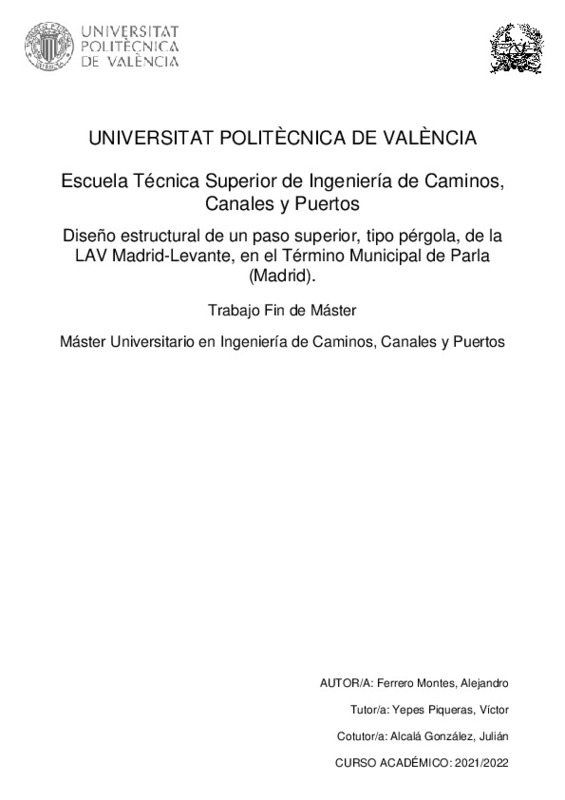JavaScript is disabled for your browser. Some features of this site may not work without it.
Buscar en RiuNet
Listar
Mi cuenta
Estadísticas
Ayuda RiuNet
Admin. UPV
Diseño estructural de un paso superior, tipo pérgola, de la LAV Madrid-Levante, en el Término Municipal de Parla (Madrid).
Mostrar el registro completo del ítem
Ferrero Montes, A. (2022). Diseño estructural de un paso superior, tipo pérgola, de la LAV Madrid-Levante, en el Término Municipal de Parla (Madrid). Universitat Politècnica de València. http://hdl.handle.net/10251/188739
Por favor, use este identificador para citar o enlazar este ítem: http://hdl.handle.net/10251/188739
Ficheros en el ítem
Metadatos del ítem
| Título: | Diseño estructural de un paso superior, tipo pérgola, de la LAV Madrid-Levante, en el Término Municipal de Parla (Madrid). | |||
| Otro titulo: |
|
|||
| Autor: | Ferrero Montes, Alejandro | |||
| Director(es): | ||||
| Entidad UPV: |
|
|||
| Fecha acto/lectura: |
|
|||
| Resumen: |
[ES] En la ingeniería de puentes de ferrocarril, se plantean multitud de tipologías estructurales causado por las condiciones de trazado, siendo altamente empleada la tipología de puente Pérgola, debido a que permite ...[+]
[EN] I In the engineering of railroad bridges, there are many structural typologies caused by the layout conditions, being highly used the Pérgola bridge typology, because it allows the execution of crossings at different ...[+]
|
|||
| Palabras clave: |
|
|||
| Derechos de uso: | Reserva de todos los derechos | |||
| Editorial: |
|
|||
| Titulación: |
|
|||
| Tipo: |
|
Localización
recommendations
Este ítem aparece en la(s) siguiente(s) colección(ones)
-
ETSICCP - Trabajos académicos [2365]
Escuela Técnica Superior de Ingenieros de Caminos, Canales y Puertos





![ZIP archive [ZIP]](/themes/UPV/images/zip.png)


